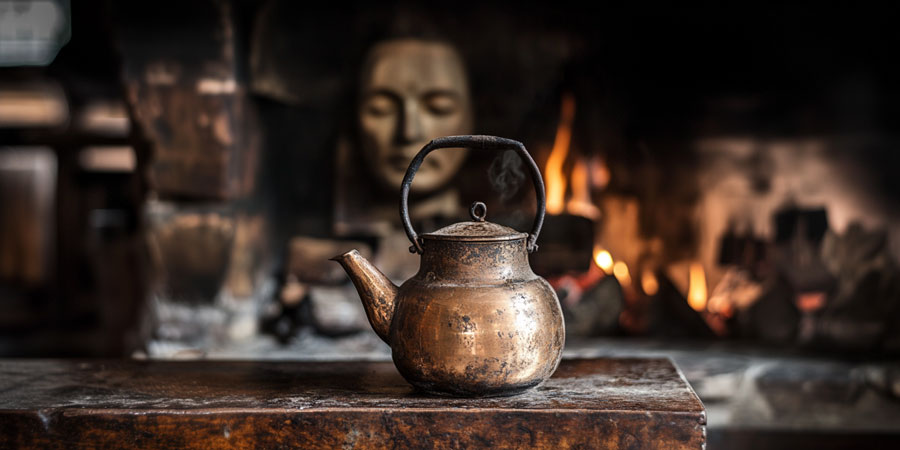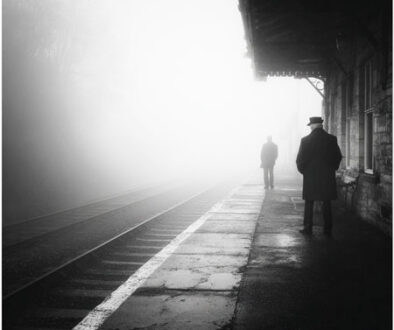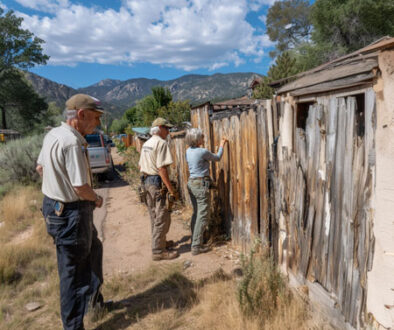Kettle Dreams
Miriam Sanderson was not superstitious. A retired archivist with a love for catalogues, church registers, and filing cabinets, she lived her life in neat columns of logic. But logic didn’t explain why, the moment she saw the old brass kettle at the Cotswold Country Auction, her hand moved to bid before her mind caught up.

It was Lot 87. A tarnished, soot-darkened thing, shaped oddly squat, with a few dents and knocks. The auctioneer mentioned it came from a long-cleared estate on the shores of Loch Glass, Scotland. “Been in the same family since the 1700s,” he said. “No reserve.”
Miriam bought it for £9. It felt unnaturally heavy when she picked it up, its metal oddly cold even in the spring sun. At home, she cleaned it gently. Under the grime, a strange etching emerged—curved lines and crescent moons, like phases orbiting the body of the kettle.
She placed it in the dead hearth of her old stone cottage and sat back to admire it. The light from the fireless grate flickered in the polished brass like trapped movement.
That night, the dreams began.
Night One
Miriam stood in her old school library, but everything was reversed—mirrored, as if the world itself had turned inside out. On each shelf sat a kettle. Hundreds. Some hummed. Some bled.
A black cat with silver eyes leapt onto a desk and looked straight at her.
A voice whispered: “The past isn’t sleeping.”
A loud knock startled her. She turned. A photograph of her as a child lay on the ground, burning from the edges.
She awoke, heart thudding.
Later that morning, the post arrived. Among the bills was a brown package with no sender.
Inside was her mother’s lost photo album—gone since the care home closed. The exact photo from her dream lay inside: Miriam as a child, grinning, under an oak tree.
She looked at the kettle on the hearth.
It shimmered, just for a second.
Night Two
This time she stood on the edge of a black lake, under a red moon.
Something moved beneath the water, large and sinuous. A low groan echoed from the depths.
A voice rose, urgent: “Don’t leave your gate tomorrow. Stay inside.”
When she woke, the dream clung like cobwebs.
That afternoon, just before her usual walk, Miriam hesitated at the garden gate. Her fingers hovered over the latch.
Then, as if on cue, a delivery van screeched around the bend, missing her fence by inches before crashing into the neighbour’s wall.
If she’d stepped out, she’d be dead.
That night, she moved the kettle to a side table and turned it to face the wall.
But it turned itself back overnight.
Night Three
She dreamt of herself.
Sitting at her kitchen table, speaking without sound. Her eyes were hollow. In her hand: a paper, with her own handwriting.
“Under the loose board,” it read.
In the dream, a figure stood in the shadows. Watching. Breathing.
She woke up choking on air.
She checked the hallway. The third board from the stairs, always creaky, lifted easily. Beneath was her late husband’s missing journal. Pages covered in frenzied sketches—of kettles, doors in walls, symbols identical to those on her kettle.
And one phrase, repeated dozens of times: “It dreams through us.”
Night Four
This time, the dream was fire.
The house burned. She stood in her nightdress, watching flames race up the walls. The kettle pulsed in the hearth, not melting, but glowing.
From within, a voice rasped: “One more. One more.”
She awoke at 6:03 a.m. to the crackling sound of wood splitting.
Smoke poured from the stairwell. Miriam barely escaped through the back kitchen door before the ceiling collapsed.
The fire service arrived minutes later. Her house was gone.
Except for one spot.
“Ma’am,” a firefighter said, stepping carefully over blackened beams. “You’re not going to believe this.”
Nestled in the untouched ashes of the fireplace, was the brass kettle.
It wasn’t even warm.
Night Five
At the Brambleton Inn, Miriam refused to sleep. She drank strong tea and sat at the window, the kettle wrapped in a towel at her feet. She considered throwing it into the river.
But something about it pulled at her. Not malevolent—no, that would be easier. It felt… ancient. Tired. Hungry.
Eventually, she dozed.
And dreamed.
A vast room. Walls made of moving shadows. Thousands of people slept on beds of ash. In the center stood a brass kettle the size of a coffin, steaming.
The woman in green returned. The one from a prior dream.
She smiled.
“You survived the offering,” she said. “Now it’s your turn.”
“My turn for what?”
“To dream the next fire,” the woman said. “Every dream has a price.”
Miriam turned to run—but her feet had become roots. She looked down and saw herself growing into the floor.
She woke screaming.
The Weeks After
The fire was ruled “an electrical fault,” though Miriam knew better.
She moved into a temporary flat near the village church. The kettle came too. She couldn’t leave it. Didn’t dare.
Each night, she had new dreams. Always dark. Always prophetic. Always followed by a day of uncanny events: a neighbor’s child nearly drowned after her dream of rising water. A local man was killed in a pub brawl she dreamt about the night before. A woman in a yellow scarf dropped dead outside the greengrocer—the exact image Miriam had seen.
The kettle sat on her windowsill. Every morning, it seemed to hum with satisfaction.
She tried to bury it.
It was back on the windowsill the next morning.
She tried to give it away.
No one saw it but her.
Final Entry – From Miriam’s Recovered Journal
I no longer believe this is an object. It is a conduit. Or a trap.
The dreams aren’t mine. They belong to it. I am the vessel now. And when it is done with me, it will move on.
I understand the symbol now—those crescents. They aren’t moons. They’re open mouths. Hungry. Calling.
Tonight, I saw the next fire. It is not mine. It is yours.
If you are reading this, you already know that something followed you home.
Don’t sleep near the kettle.
Don’t dream near the fire.
And for God’s sake, don’t listen if it starts whispering your name.



